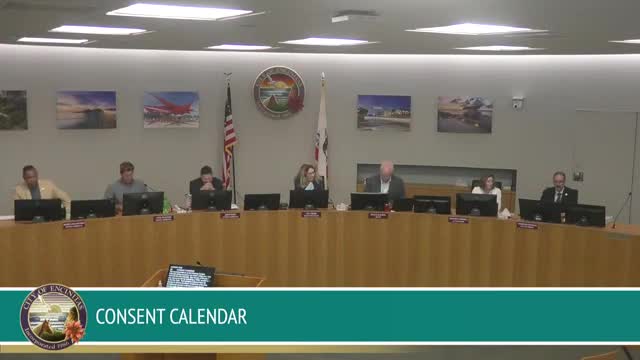Santa Fe Irrigation District Updates Joint Facilities Capital Improvement Program for Next Decade
September 18, 2025 | Encinitas, San Diego County, California
This article was created by AI summarizing key points discussed. AI makes mistakes, so for full details and context, please refer to the video of the full meeting. Please report any errors so we can fix them. Report an error »

The San Diego Water District (SDWD) and the City Council of Encinitas convened on September 17, 2025, to discuss various agenda items, primarily focusing on infrastructure and capital improvement projects. The meeting began with a unanimous vote on a motion, followed by a review of the day's agenda, which included no action items but featured an important informational update.
Marissa Potter, Engineering Manager for the Santa Fe Irrigation District, presented an update on the joint facilities capital improvement program. She explained that the joint facilities, co-owned by the Santa Fe Irrigation District and the San Diego Water District, encompass critical infrastructure such as the filtration plant, San Diego Dam Reservoir, and extensive pipeline systems. The capital improvement program aims to maximize local water resources, which are essential for cost-effective service delivery.
Potter highlighted that a master plan was completed in 2021, focusing on local water maximization. However, due to the current loss of local water at Lake Hodges, an interim master plan update is underway to reassess future projects over the next decade. This update will consider mechanical replacements and other necessary adjustments while ensuring alignment with the cost of service for both districts.
The fiscal year 2026 budget for the San Diego Water District is projected at approximately $1.4 million, with several ongoing projects. Notably, an evaluation of the San Diego Reservoir Dam revealed a leak, prompting the installation of a temporary "porta dam" for further inspection and repair. The project is currently under review by the Division of Safety of Dams.
Additionally, the Clearwell Solar Project is in progress, featuring the installation of solar panels and a battery system, expected to be completed by March 2026. Other projects discussed included leach field rehabilitation and anode bed replacements for cathodic protection of steel mains.
The meeting concluded with a focus on the importance of these infrastructure projects and their implications for water management in the region. The council emphasized the need for ongoing coordination with regulatory agencies to ensure the successful implementation of these initiatives.
Marissa Potter, Engineering Manager for the Santa Fe Irrigation District, presented an update on the joint facilities capital improvement program. She explained that the joint facilities, co-owned by the Santa Fe Irrigation District and the San Diego Water District, encompass critical infrastructure such as the filtration plant, San Diego Dam Reservoir, and extensive pipeline systems. The capital improvement program aims to maximize local water resources, which are essential for cost-effective service delivery.
Potter highlighted that a master plan was completed in 2021, focusing on local water maximization. However, due to the current loss of local water at Lake Hodges, an interim master plan update is underway to reassess future projects over the next decade. This update will consider mechanical replacements and other necessary adjustments while ensuring alignment with the cost of service for both districts.
The fiscal year 2026 budget for the San Diego Water District is projected at approximately $1.4 million, with several ongoing projects. Notably, an evaluation of the San Diego Reservoir Dam revealed a leak, prompting the installation of a temporary "porta dam" for further inspection and repair. The project is currently under review by the Division of Safety of Dams.
Additionally, the Clearwell Solar Project is in progress, featuring the installation of solar panels and a battery system, expected to be completed by March 2026. Other projects discussed included leach field rehabilitation and anode bed replacements for cathodic protection of steel mains.
The meeting concluded with a focus on the importance of these infrastructure projects and their implications for water management in the region. The council emphasized the need for ongoing coordination with regulatory agencies to ensure the successful implementation of these initiatives.
View full meeting
This article is based on a recent meeting—watch the full video and explore the complete transcript for deeper insights into the discussion.
View full meeting
